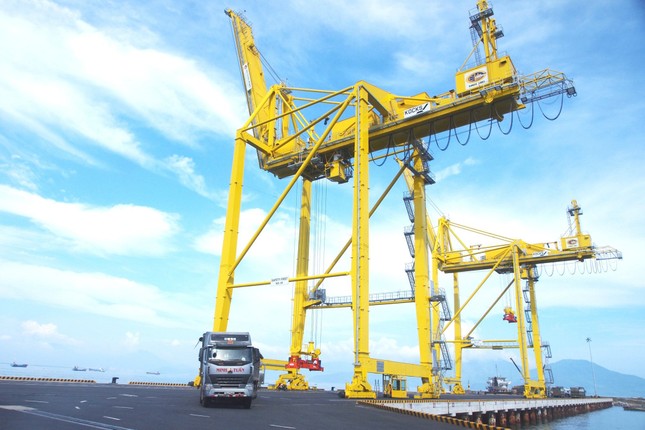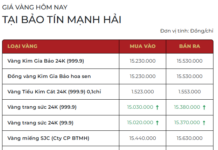On August 2, the Trade Promotion Agency (under the Ministry of Industry and Trade) coordinated with the Da Nang Department of Industry and Trade to organize a Trade Connection and Export Promotion Conference in Da Nang for 2024.
According to Mr. Tran Chi Cuong, Vice Chairman of the Da Nang People’s Committee, Da Nang has a very favorable geographical location as the gateway to the sea for the Central Highlands and countries such as Laos, Cambodia, Thailand, and Myanmar to Northeast Asian countries through the East-West Economic Corridor.

Da Nang’s sea logistics has limited productivity compared to its position as the region’s transshipment hub. Photo: Giang Thanh
Resolution 43 of the Politburo and, more recently, Resolution 136 of the National Assembly have oriented Da Nang to become a port city and a regional logistics center, forming a supply chain of logistics services in Central Vietnam, serving as a gateway for receiving and transporting goods with localities and countries in the region and internationally.
Da Nang is focusing its resources on building and completing Lien Chieu Port and calling for investment in ten regional logistics centers. Currently, the city also has a developed transport infrastructure with three main logistics transport routes: sea, air, and road.
However, Mr. Duong Tien Lam, Head of the Vietnam Logistics Business Association’s Representative Office in Da Nang, acknowledged that the logistics system in Da Nang is “insufficient” to meet the needs of exporting enterprises and become the region’s logistics hub.
Accordingly, Da Nang has an international port that can receive container ships, Tien Sa Port. However, although it is a choice on the cargo route of many of the world’s leading shipping lines, this port still has limited productivity.
“A worrying issue for exporting enterprises is the high cost of sea freight. In Da Nang alone, since April 2024, sea freight rates have returned to pre-COVID-19 levels, significantly impacting enterprises,” he added.
He continued, “Apart from Southeast Asia and China, sea freight rates to other regions have increased significantly. This requires enterprises to consider and calculate the fluctuations from now until the end of the year.”
Meanwhile, Da Nang’s air cargo transport has not met expectations, with slow growth and a small scale compared to Hanoi and Ho Chi Minh City.

Mr. Duong Tien Lam, Head of the Vietnam Logistics Business Association’s Representative Office in Da Nang
Mr. Lam also shared that road transport is of interest and frequent use to importers and exporters in the region, especially for markets in countries with contiguous borders or shared borders with Vietnam, such as China, Laos, Thailand, and Cambodia.
However, one of the critical routes, the East-West Economic Corridor connecting to Myanmar, has not been effectively utilized.
The connection between Da Nang and neighboring countries, especially Laos, by road is mainly through Lao Bao, La Lay (Quang Tri), and Nam Giang (Quang Nam) border gates, which have not been efficiently exploited.
As one of the leading exporting enterprises in Da Nang, Mr. Le Hoang Khanh Nhut, Director of DRC, shared that in this extremely competitive trend, logistics plays a decisive role in exports when Vietnam does not yet have large shipping lines to accompany enterprises.
For example, in Thailand, the government has a policy to support logistics costs. Therefore, a container of goods exported from Thailand to the US always costs $100-200 less than a container from Vietnam.
“Therefore, I hope that the authorities will strengthen the connection between enterprises with the same export characteristics, ensuring a large volume of containers to key markets to have a basis for negotiating prices with shipping lines to help enterprises reduce logistics costs,” Mr. Nhut added.






































